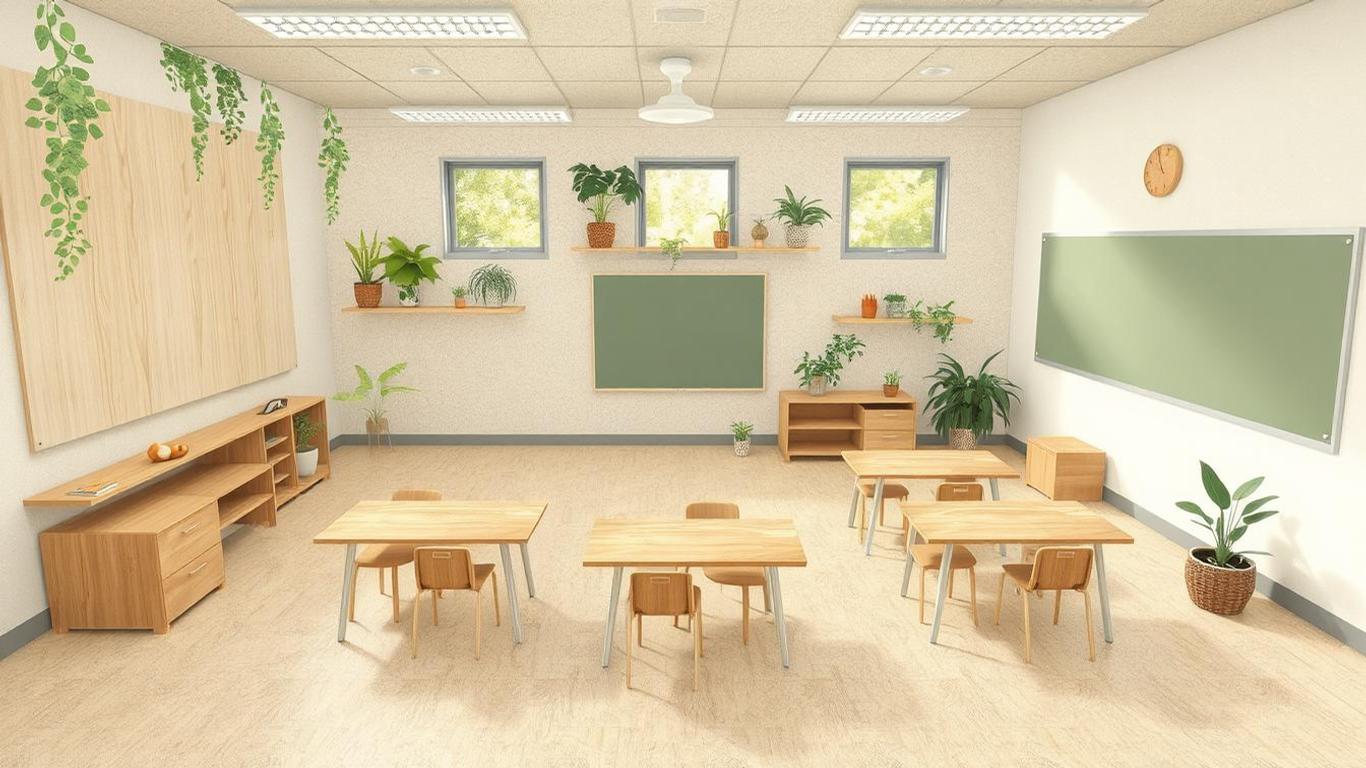Biophilic design is an innovative approach that seeks to connect people with nature through the built environment.
In the context of education, incorporating biophilic principles into classroom settings can significantly enhance student engagement, well-being, and overall learning outcomes.
This blog post delves into the concept of classroom modern biophilic design, exploring its benefits, practical applications, and real-world examples.
Also Read: 5+ Creative Red Ribbon Week Door Decorating Ideas Inspired by Movies
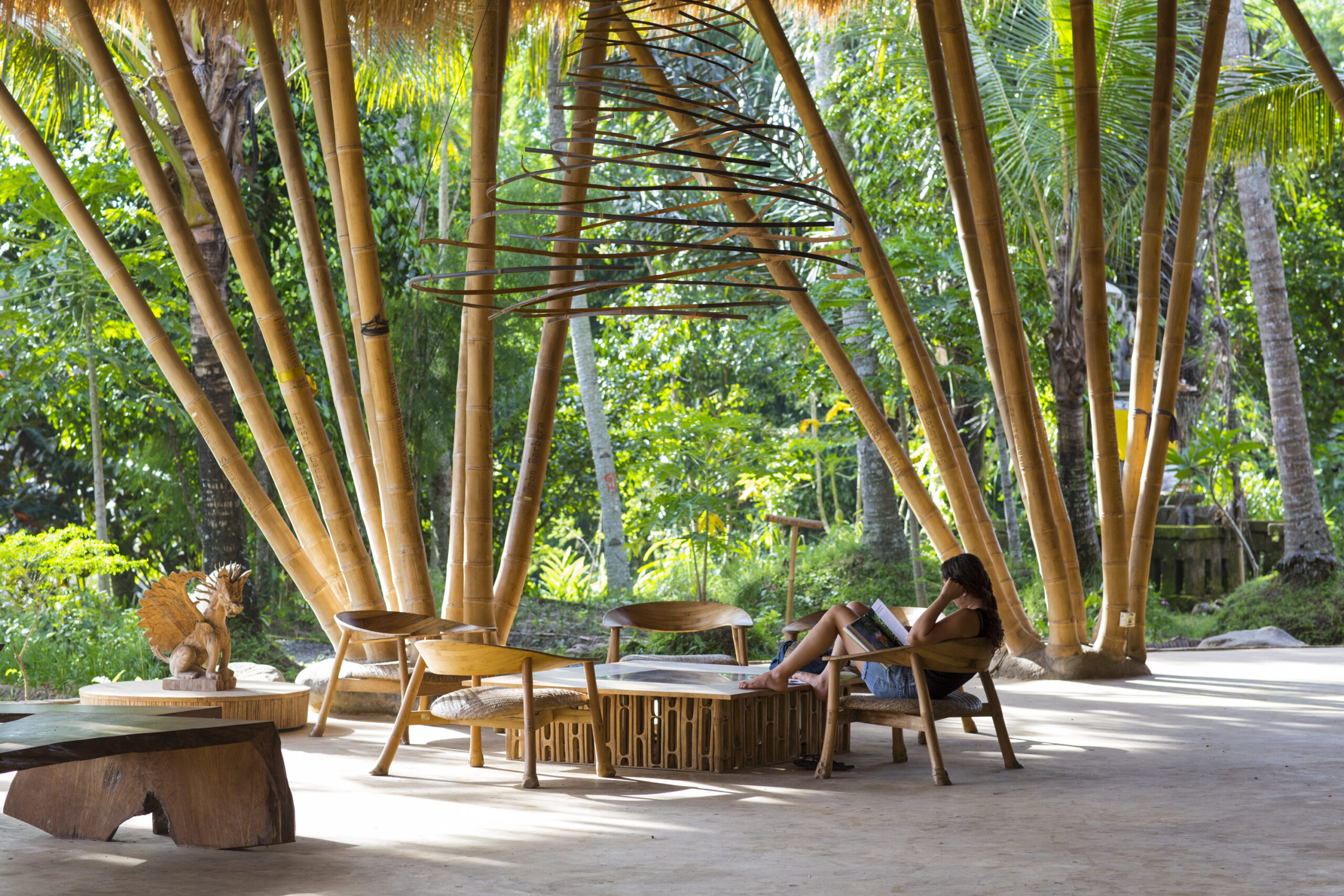
Understanding Biophilic Design in Education
What is Biophilic Design?
Biophilic design is rooted in the idea that humans have an inherent affinity for nature. According to a study by Edward O. Wilson, this connection, referred to as “biophilia,” suggests that exposure to natural elements can foster creativity, reduce stress, and improve cognitive function.
In educational settings, biophilic design translates to incorporating natural materials, light, greenery, and organic shapes into classrooms.
Importance of Biophilic Design in Classrooms
- Enhanced Learning Outcomes: Research indicates that students exposed to natural elements perform better academically. A study published in the journal Research Gate in Psychology found that classrooms with natural light and plants can improve concentration and memory retention by up to 20%.
- Improved Well-Being: Natural elements in classrooms can reduce anxiety and promote a sense of calm. The World Health Organization says that environments that incorporate nature contribute to better mental health, particularly important for students facing academic pressures.
- Increased Engagement: Students are more likely to engage in their learning when they are in a stimulating environment. Studies show that classrooms designed with biophilic principles can lead to higher participation rates and enthusiasm for learning.
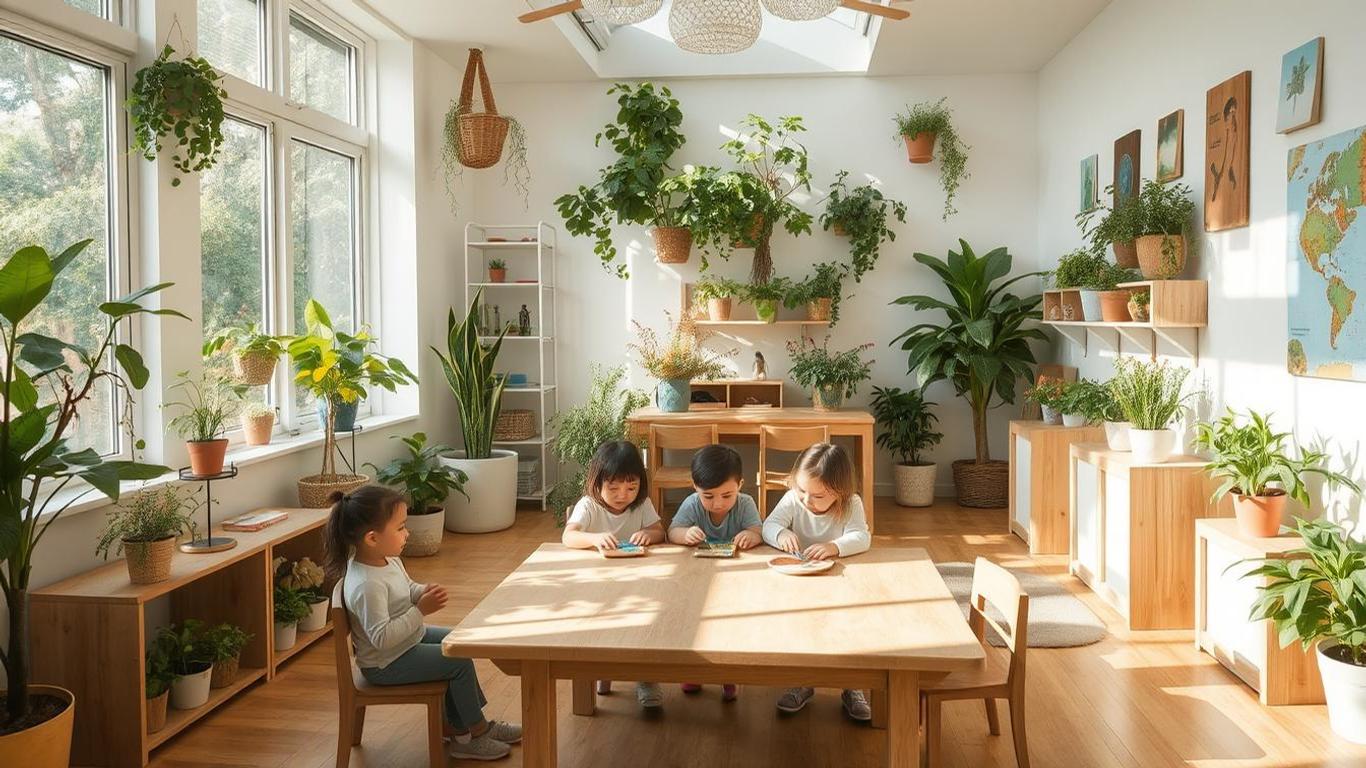
Key Elements of Classroom Modern Biophilic Design
1. Natural Light
Natural light is one of the most effective elements of biophilic design. Studies have shown that classrooms with ample daylight can enhance mood and energy levels. Consider the following strategies to maximize natural light:
- Large Windows: Incorporate floor-to-ceiling windows to bring in as much light as possible.
- Skylights: Adding skylights can illuminate spaces that may not have windows.
- Light Shelves: Use light shelves to reflect sunlight deeper into the classroom.
2. Indoor Plants
Integrating plants into the classroom not only enhances aesthetics but also improves air quality and mental well-being. Here are some plants that are easy to maintain and beneficial in educational settings:
- Spider Plant: Known for its air-purifying qualities.
- Peace Lily: Effective at removing toxins from the air.
- Snake Plant: Requires minimal care and thrives in various lighting conditions.
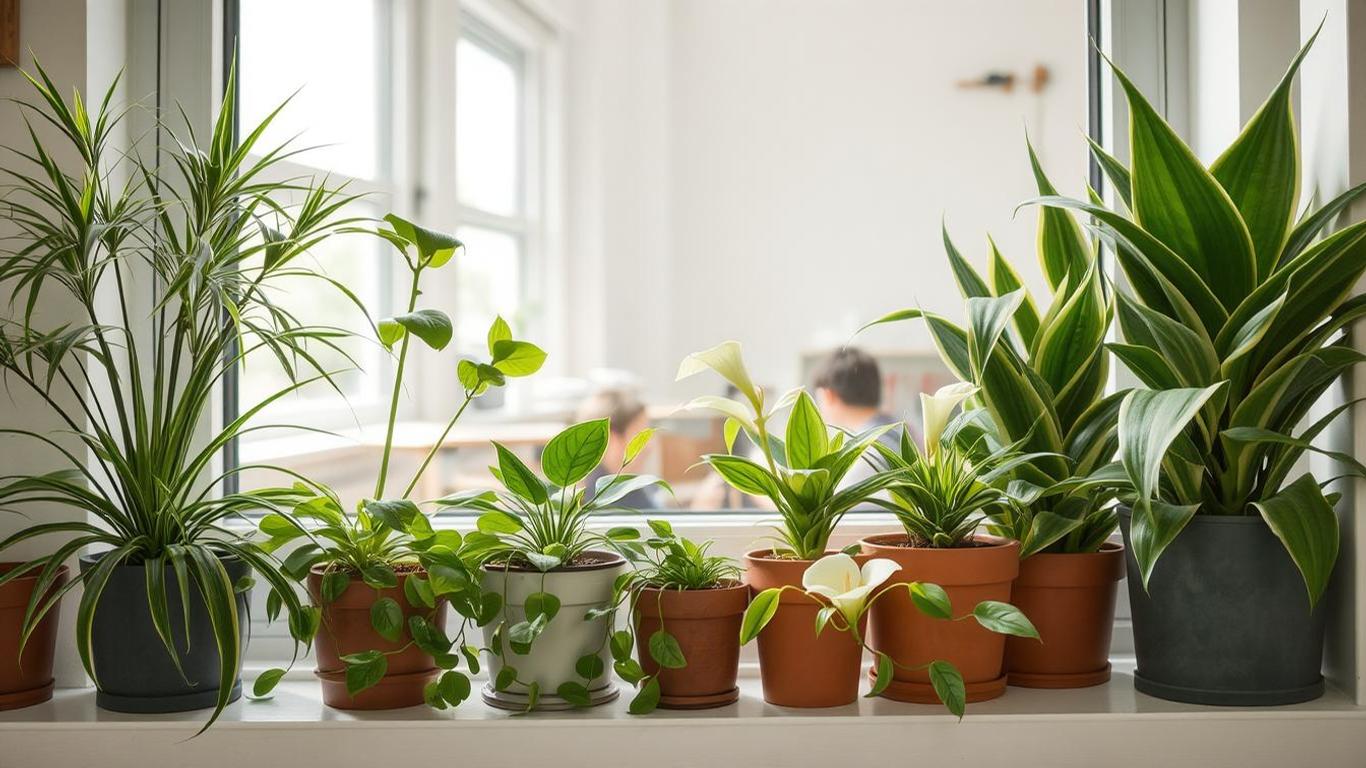
3. Natural Materials
Using natural materials in classroom furniture and decor can create a warm and inviting atmosphere. Consider:
- Wooden Desks and Chairs: Opt for sustainably sourced wood to reduce environmental impact.
- Stone and Clay: Use stone or clay accents for a tactile experience that connects students to the earth.
4. Organic Shapes and Forms
Incorporating organic shapes can create a more inviting and less rigid learning environment. This can be achieved through:
- Curved Furniture: Choose furniture with soft edges to promote comfort.
- Biomorphic Patterns: Use designs inspired by natural forms in wall art and textiles.
Case Studies: Successful Implementation of Biophilic Design
Case Study 1: The Green School, Bali
The Green School in Bali is an exemplary model of biophilic design. The school is built from bamboo and incorporates natural light and ventilation. The lush surroundings and open-air classrooms create an immersive learning environment. As a result, students report higher levels of satisfaction and engagement.
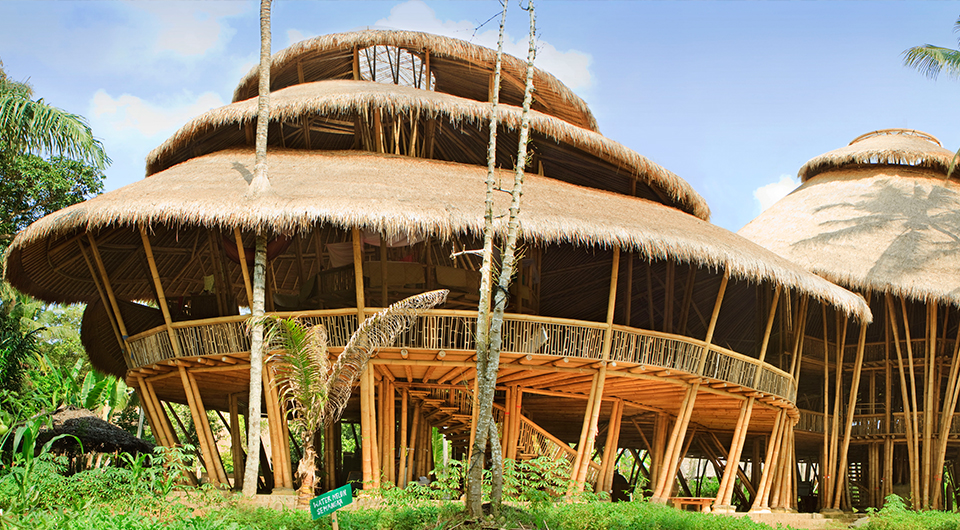
Case Study 2: The K-12 School Design in Norway
A recent project in Norway focused on designing K-12 schools with biophilic principles. Features included green roofs, extensive outdoor learning spaces, and large windows for natural light. Research conducted post-implementation showed a 15% increase in student performance and a significant reduction in stress-related symptoms among students.
Actionable Advice for Educators and Administrators
- Assess Current Spaces: Evaluate existing classrooms for natural light, plant presence, and material choices. Identify areas for improvement.
- Involve Students: Engage students in the redesign process. Allow them to choose plants or layout options to foster ownership of their learning environment.
- Professional Development: Train staff on the importance of biophilic design and how to implement these principles in daily classroom activities.
Conclusion
Embracing classroom modern biophilic design holds the potential to transform educational environments into spaces that nurture learning, creativity, and well-being. By integrating natural elements, maximizing light, and employing organic forms, educators can create classrooms that inspire and engage students. As we move forward, it is essential to prioritize these principles to foster healthier, more effective learning environments for future generations.
References
- Wilson, E. O. (1984). Biophilia. Harvard University Press.
- Kaplan, R., & Kaplan, S. (1989). The Experience of Nature: A Psychological Perspective. Cambridge University Press.
- Frontiers in Psychology, 2020. Natural Elements in Learning Environments.
- National Library of Medicine, Mental Health and the Environment.
By adopting biophilic design, we can create classrooms that are not only functional but also resonate with the innate human desire to connect with nature, ultimately leading to improved educational outcomes.


